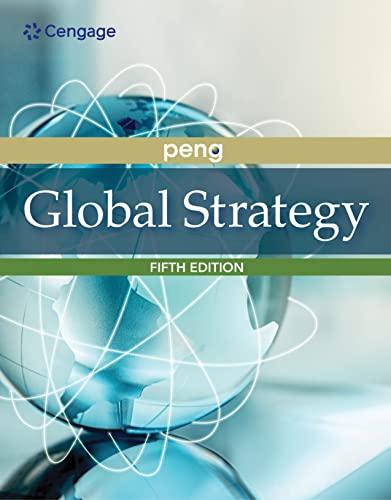Question
Years of unregulated and risky deals exposed the insurance giant to catastrophic losses. Now it's paying bonuses to the same people who helped create the
Years of unregulated and risky deals exposed the insurance giant to catastrophic losses. Now it's paying bonuses to the same people who helped create the mess. A look at why a dark corner of the global economy is costing U.S. taxpayers $170 billion and counting.
Treasury Secretary Tim Geithner had every reason to think he has seen all of the AIG dirty laundry. The government owned 80% of the company, and Geithner had just orchestrated AIG's most recent handout - its fourth, if you are keeping score, for $30 billion on March 2 - to prevent the teetering insurance giant from going over the cliff and taking the rest of the global financial system with it. AIG had already cost the tax payers some $170 billion mostly to repair the damage done by one of its units, AIG Financial Products (AIG FP), which last year alone piled up to $40 billion in losses related to its dealings in complex mortgage bond derivatives.
Then Geithner's staff made the discovery that would infuriate nearly everyone in Washington. On March 10, the Secretary learned that AIG had paid out $165 million in retention bonuses executives at the unit that compelled the U.S. to bail out the company in the first place. It took Geithner until 7:40 the next night to reach AIG's newish CEO, Ed Liddy. The bonuses were not tenable; they had to be canceled, he demanded. Liddy, a dollar-a-year man who took over the company after bonuses had been promised replied that AIG's lawyers had decided that the contracts could not be broken without even bigger costs to taxpayers. Geithner sent Treasury's lawyers searching for a way out but they couldn't fin one.
One balance sheet of debacles caused by this economic crisis - the $700 billion Troubled Asset Relief Program (TARP), the stock market swoon, the credit crunch and the ongoing global recession - $165 million is small change. But the revelations of the AIG bonuses, like nothing else, seemed to finally tip the mounting public furor over corporate malpractice into a full scale rebellion. Yet Geithner, embarrassed for discovering the bonuses so late, plans to dock AIG that much out of the next $30 billion in bailout funding when it is delivered - which amounts to a mere 0.1% of the total AIG has received. Assorted Senators, from New York Democrat Chuck Schumer to Montana Democrat Max Baucus and Iowa Republic Chuck Grassley, have proposed a number of tax and legal schemes to snatch back the bonus bucks from AIG FO executives, 73 of whom got pay outs of $1 million or more, according to New York State Attorney-General Andrew Cuomo.
With all the political theater and populist grandstanding though, the bigger issue had been obscured. And that is, "Just what is AIG doing with the $170 billion? Does the company strategy, which is to wind down its exposure to toxic assets and sell some of its profitable insurance divisions to help pay off the government debt; stand a good chance of succeeding? And if it does, will the world avert financial Armageddon?"
Those questions have taken on greater urgency, since it turns out that AIG has become the banking industry's ATM, essentially passing along $52 billion of TARP money to an ARRAY of U.S. and foreign financial institutions (from Goldman Sachs to Switzerland's UBS). Those firms were counterpoises to the credit default swaps (CDSs) that AIG FP sold at east through 2005, and the companies were collecting on the insurance like derivatives. AIG paid out an additional of $43.7 billion to many of the same banks, which were also customers of the securities lending operations run out of AIGs insurance division. In this case, AIG managed to take a business specifically designed to be low risk, low return and amp it into another dicey venture - with tax payers on the hook.
Step by Step Solution
There are 3 Steps involved in it
Step: 1

Get Instant Access to Expert-Tailored Solutions
See step-by-step solutions with expert insights and AI powered tools for academic success
Step: 2

Step: 3

Ace Your Homework with AI
Get the answers you need in no time with our AI-driven, step-by-step assistance
Get Started


